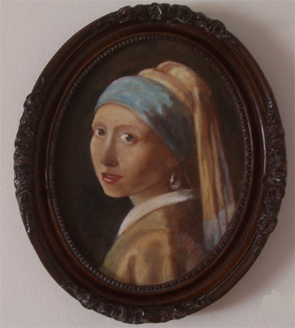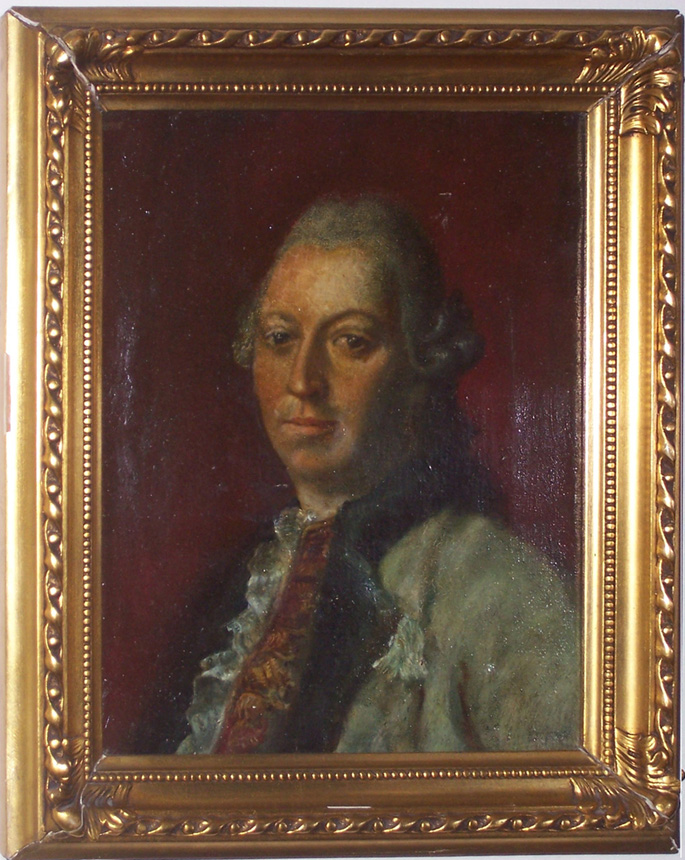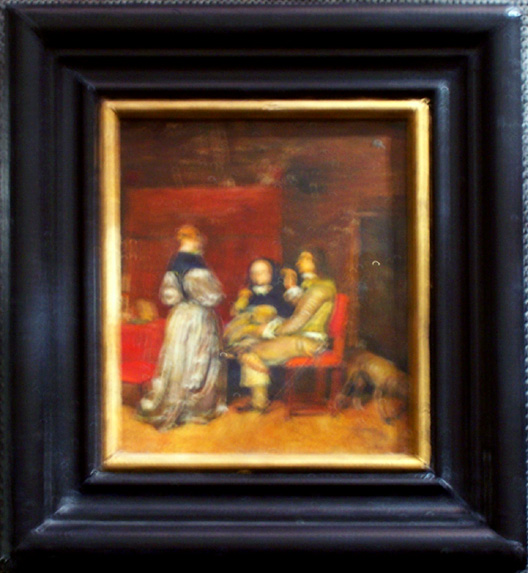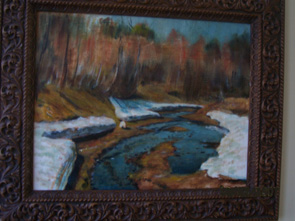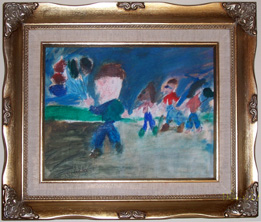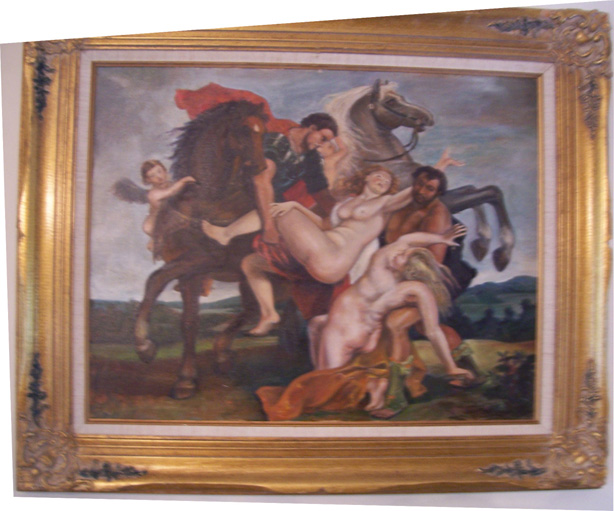
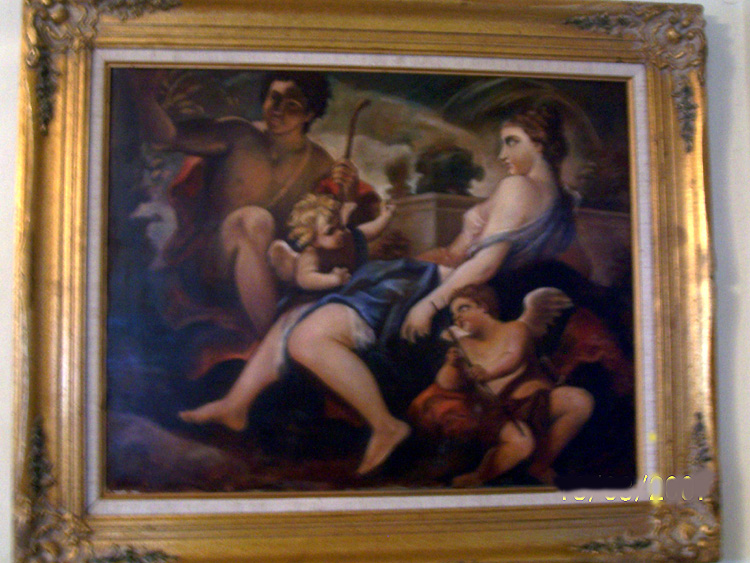

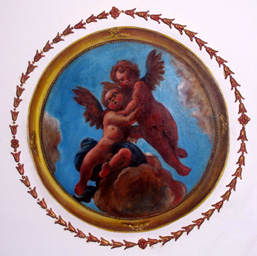

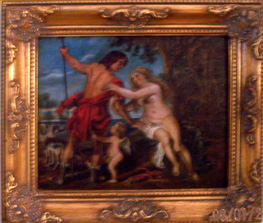






An underpainting is an initial layer of paint applied to a ground (over a canvas), which serves as a base for subsequent layers of paint. Underpaintings are often monochromatic and help to define colour values for later painting (my favorite is burn umber). Underpainting gets its name because it is painting that is intended to be painted over in a system of working in layers.
A multi-color underpainting is
useful and was used extensively by many artists. The colors of
the underpainting can be optically mingled with the subsequent
overpainting, without the danger of the colors physically blending
and becoming muddy. When the underpaining is dry, I begin to add
layers of glaze in different colors, letting each layer dry before
adding the next one.
A glaze in painting refers to a layer of paint, thinned
with a medium, so as to become somewhat transparent. A glaze changes
the color cast or texture (gloss or matte, for instance) of the
surface. Drying time depends on the amount of medium used in the
glaze. Highlights are often painted white, and then glazed with
proper colors.
Since the glazed layers are all
somewhat transparent, the result is a combination of the colors,
creating a final hue as if the painter has simply mixed the colors.
The benefit of glazing is that it allows the painter to have more
control over the evolution of the painting, and also it creates
a luminescent, translucent surface, with certain layers appearing
to show through.
I always paint fat over lean. The principle of painting
'fat over lean' is one of the fundamental concepts of oil painting.
'Lean' oil paint is oil paint mixed with more turpentine (white
spirit) than oil, or oil paint mixed with a fast-drying oil. 'Lean'
oil paint dries faster than 'fat' oil paint. I never use the black
paint, instead I use indigo (navy blue), which looks darker than
black, and is not as "dead color" (absorbing light)
as black. Black could be used to mixed with other colors.
After a painting dries, it can be varnished. Varnish is a transparent, hard, protective finish or film. Varnish is traditionally a combination of a drying oil, a resin, and a thinner or solvent. Varnish finishes are usually glossy but may be designed to produce satin or semi-gloss sheens by the addition of "flatting" agents. Varnish has little or no color, is transparent, and has no added pigment.

